The 8 Best Road Bike Wheelsets in 2020
The drivetrain is what gets those wheels moving, and the bike frame affects ride feel, but ask any cyclists and chances are they’ll tell you that the wheels bring the greatest performance upgrade.
It’s the most significant improvement you can make to your bike.
There are many factors to consider when choosing a new set of wheels.
- Carbon or aluminum rim?
- Clincher vs tubeless?
- Deep or shallow profile?
On this page, I’ll discuss what goes behind the decision-making process and some of the popular models favored by a lot of cyclists today.
A Quick Glance : Our Favorite Road Bike Wheelsets
Strong Aluminum Picks for Training
Shimano Dura Ace C24
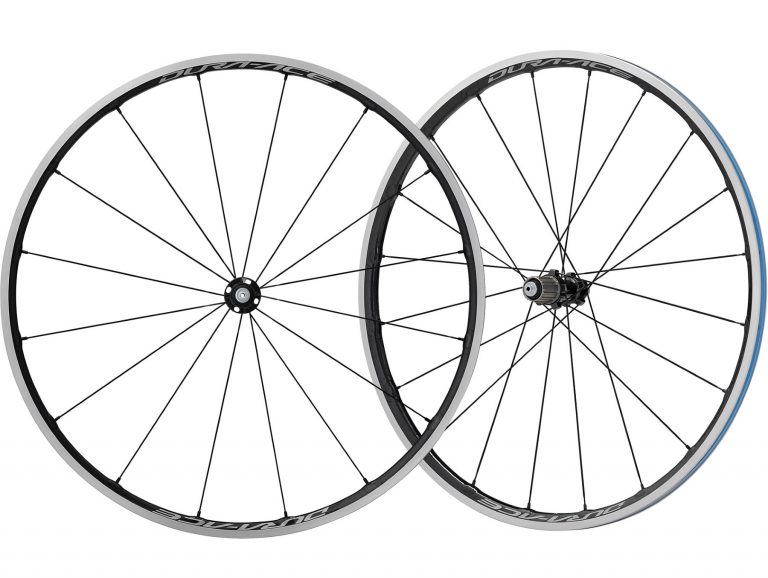
- Rim Material : Aluminum
- Rim Depth : 24mm
- Weight : 1,450g
- Ideal for : Climbing
With so much focus on Shimano’s extensive family of drivetrain components, we sometimes forget that the company makes a lot more than derailleurs, cranks, and shifters. Wheelsets are one of those items, and we shouldn’t overlook them.
For a testimonial, look no further than the World Tour. Six pro teams are currently rolling on Dura Ace wheelsets. The C24 (a reference to its 24mm rim depth) is the climbing version, which also comes in C40 and C60 sizes.
But unlike its wider-rimmed brethren, which are also available as tubeless rim, the C24 is only available in clinchers. Shimano goes with a hybrid approach with the rim material, marrying a thin aluminum rim wall with a carbon laminate coating to create a strong, rigid, and lightweight wheel.
One of the highlights of the Shimano Dura Ace C24 is the cup and cone bearing design that makes this one of the smoother rolling wheels you can buy.
- Pros : Durable overall construction that will last you years.
- Cons : Not ideal for wider tires (above 25mm).
Fulcrum Racing Zero CMPTZN DB
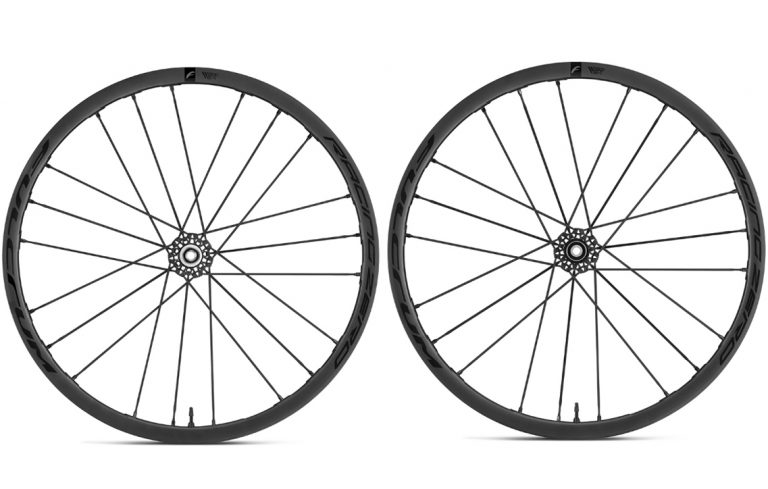
- Rim Material : Aluminum
- Rim Depth : 30mm
- Weight : 1,570g
- Ideal for : Climbing
Fulcrum uses cutting-edge technology to improve wheel rotation and balance with the Racing Zero CMPTZN.
When it comes to an excellent racing wheel, bearings make a huge difference. They determine just how easily it will turn on the hub. Fulcrum uses CULT ceramic bearings to provide rotation that Fulcrum says is nine times smoother than standard bearings.
And while it may be a bit heavier than its carbon counterparts, Fulcrum has milled down the rims to cut as much weight as possible while still maintaining optimum stiffness.
The Fulcrum Racing Zero CMTZN incorporates MoMag tech into the rims, maintaining even tension throughout the rim by eliminating stress points. It also includes the Fulcrum Dynamic Balance System, which counters the valve stem’s weight with the equivalent load on the opposite side of the rim.
- Pros : Unique 2:1 spoke lacing pattern results in a very stiff wheelset.
- Cons : Retails at a price point higher than most aluminum models.
Lightweight Picks for Climbing
Zipp 202 Firecrest
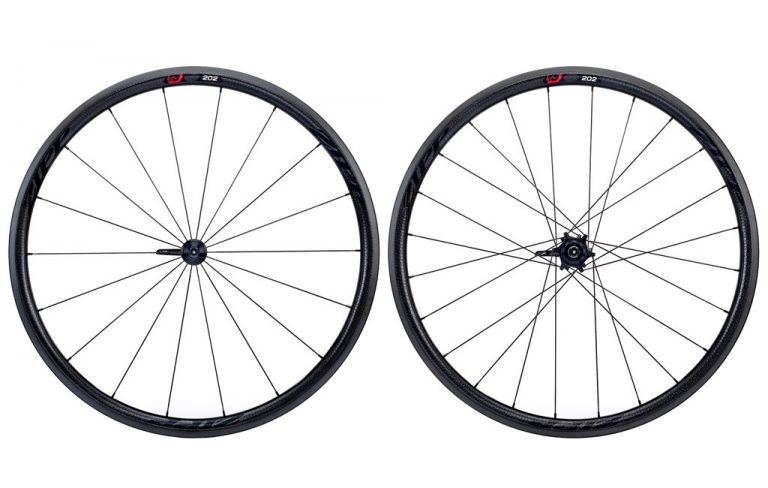
- Rim Material : Carbon
- Rim Depth : 32mm
- Weight : 1,558g
- Ideal for : Climbing
Zipp has dominated the carbon wheelset market for a long time now, and for a good reason. The company can’t seem to get it wrong when it comes to carbon rims.
Although not as aerodynamic as the deeper 303 or 404, Zipp uses dimpling to improve airflow and aerodynamics. With its lower profile, the Zipp 202 Firecrests excel on long climbs.
Zipp also uses a wider rim and 2-cross spoke to increase stiffness for braking and pedaling. The hub incorporates Zipp’s new 77 hubs on the front and 177 on the back, adding stiffness and durability over previous Zipp models. Disc brake compatibility adds reliable stopping power without the complications that come with carbon and rim brakes.
- Pros : Newer versions are tubeless tire ready and disc brake compatible.
- Cons : Not aerodynamic and will struggle on fast rides on the flats.
Enve SES 2.2
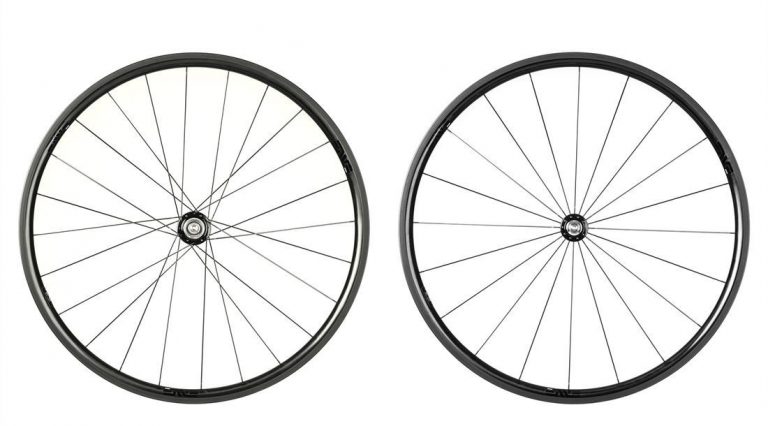
- Rim Material : Carbon
- Rim Depth : 25mm
- Weight : 1,350g
- Ideal for : Climbing
Once you get past the idea that carbon is too fragile for bike components (it isn’t), embrace the advantages that Enve’s new carbon hub adds to the performance.
Enve molds the holes in its carbon hub, as opposed to drilling them, making them strong and light. It weighs in at just 1,350g. The hub isn’t the only part of the SES 2.2 that it has improved upon.
Enve’s build and ride quality are remarkable, with all spoke and valve stem holes all molded rather than drilled, preserving the durability of the carbon fiber. It has also upgraded its braking performance with a new braking surface, which Enve says improves brake performance by more than 30% over its predecessor, including improvements to braking ability in wet weather.
The Enve SES 2.2 also uses shallower rims, cutting grams while allowing for quicker accelerations, improving climbing performance, and negating stiff crosswinds.
- Pros : Very lightweight.
- Cons : Be prepared to pay 10 to 20% more over other similar profile carbon wheels.
All-Rounder Picks
Zipp 303 Firecrest
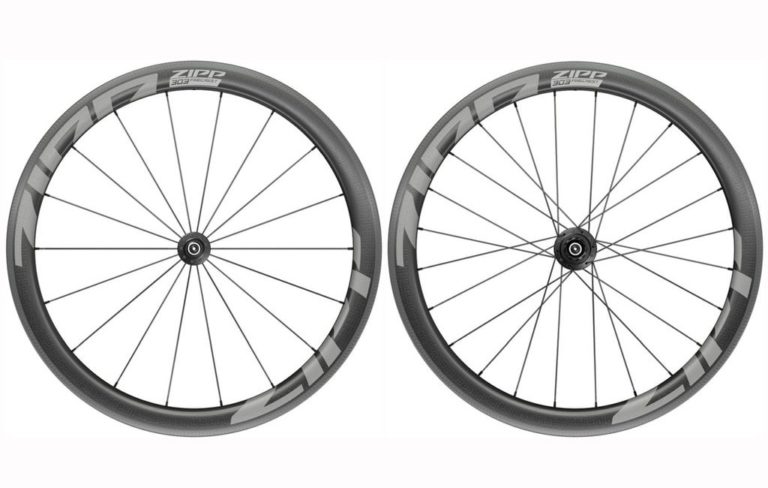
- Rim Material : Carbon
- Rim Depth : 40mm
- Weight : 1,352g
- Ideal for : All-rounder
Although the name Zipp has become synonymous with top-of-the-line when it comes to carbon rims for some time now, perhaps the biggest highlight of the 303 Firecrest rims aren’t the rims themselves, but rather the ZR1 hub, which may be revolutionary.
The ZR1 is a new hub design from SRAM that has 66 points of engagement which results in a very snappy and fast acceleration. And typical to Zipp, you can also expect the hub to be buzzing very loudly when you’re freewheeling.
Zipp goes with a mid-depth 40mm rim, making a compromise between aerodynamics, weight, and handling. Zipp has also gone with a very wide rim at 25mm and it’s only compatible with tires of at least 28mm or wider for improved comfort.
In keeping with current trends, Zipp designed the latest 303 Firecrest with disc brake options only.
- Pros : Excellent value for money vs weight and performance.
- Cons : Buzzing sound can be very loud even when it’s new.
Campagnolo Bora WTO 45
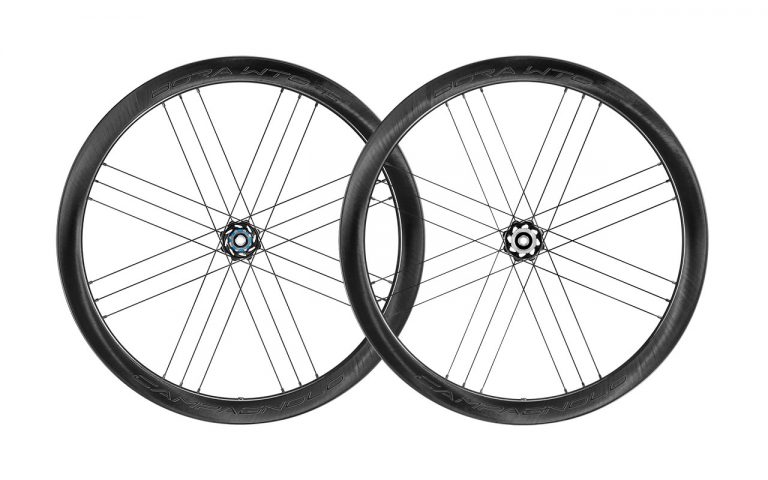
- Rim Material : Carbon
- Rim Depth : 45mm
- Weight : 1,496g
- Ideal for : All-rounder
Campagnolo Bora WTO 45’s are very versatile and equally at home on climbs as they are on windy flats thanks to the Bora’s mid-depth rim widths. They are light enough for ascending while maintaining excellent aerodynamics for flats. Campy claims that at certain angles, the wind will act as a thrust on the wheels.
Campy designed the rim to handle both clincher or tubeless tires. And since Campy uses a magnet through the rim to place the spokes, there are no holes and hence no need for rim tape, trimming valuable milligrams and making the carbon rims stronger.
The hub is also an impressive feature of the Campagnolo Bora WTO 45. It uses ceramic bearings that are 50% smoother, according to Campy, not to mention lighter. Campagnolo has also redesigned the hub to improve aerodynamics while at the same time increasing the Bora’s spoke count for added strength.
All of this effort put into weight savings pays off. The Campagnolo Bora WTO 45 is one of the lighter disc brake wheels you can find, weighing in at just 1,496g.
- Pros : Very smooth hub with ceramic bearings.
- Cons : Rim is narrow at 19mm internal diameter.
High Profile, Aero and Performance Picks
Enve SES 5.6
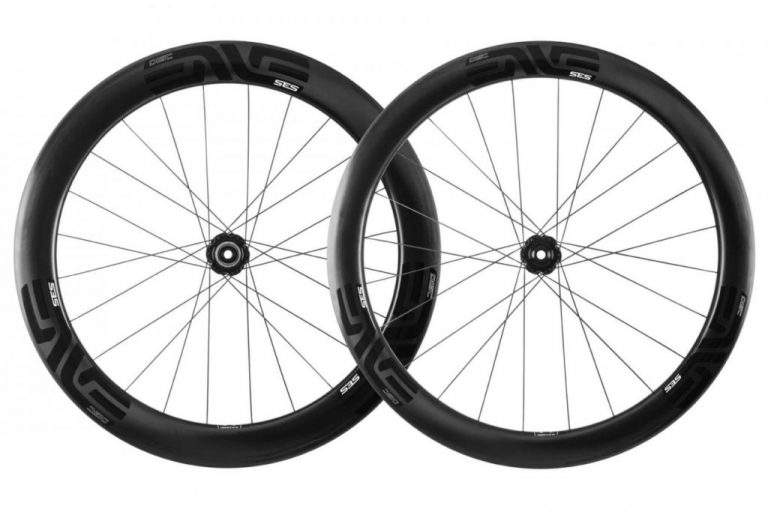
- Rim Material : Carbon
- Rim Depth : 54mm (front), 63mm (rear)
- Weight : 1,567g
- Ideal for : Fast ride on flat roads
Is there a reason for a disc brake wheelset to have a braking surface? Then why do so many still have them?
Rather than save R&D costs by repurposing an older design, Enve instead designed a wheel that ditches the braking surface for better aerodynamics. Although the change is subtle, a slight change in the profile, Enve says it improves airflow where the tire and rim meet, improving overall aerodynamics and ride quality.
In addition to being aerodynamic, the Enve SES 5.6 is also strong. Enve’s manufacturing process involves molding the valve and spoke holes instead of cutting into the carbon, weakening it. This has the effect of making the rim very stiff yet lightweight.
- Pros : Fast on the flats and stable in crosswinds.
- Cons : Be prepared to pay more.
Zipp 404 NSW
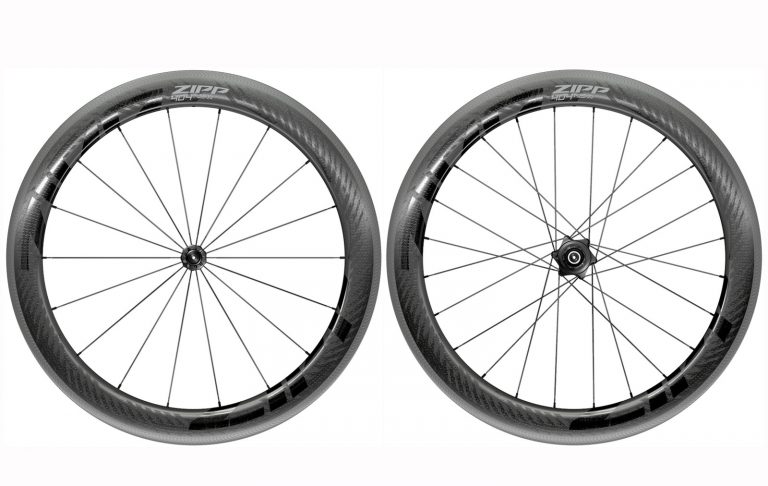
- Rim Material : Carbon
- Rim Depth : 58mm
- Weight : 1,592g
- Ideal for : Fast rides on flat roads
The Zipp 404s feature all the pluses of the Zipp 303, including the impressive Cognition hub, which makes the ride quality dramatically smoother.
Both are also tubeless setup ready. The only real difference between the two is in the rim depth. While the Zipp 303 features a rim depth of 40mm, the 404 ups that to 58mm.
This makes the Zipp 404 more aerodynamic but a little less versatile. It’s best suited for fast rides on the flats. It also makes the 404 slightly heavier. For anyone who has ever ridden deep rims on windy days, this is no small thing as the additional weight helps to stabilize the bike.
- Pros : Excellent after sales service and warranty.
- Cons : Sluggish on accelerations but fast when picked up speed.
Read More : Zipp 303 vs 404 – What are the Differences?
Road Bike Wheels Buying Guide
Believe it or not, there is a lot to consider when shopping. And, given that a single set can run as much as $3,000, you’d better know your stuff before pulling the trigger on a purchase.
Here are 7 things to know before going for your next road bike wheel upgrades.
Low vs. Mid vs. High Rim Profile
If you’ve watched enough pro cycling, you’ve seen how varied rim depths can be. You can find rim depths (or profiles) ranging from 20mm up to more than 50mm.
What’s the difference?
- Low profile (20mm to 30mm), which includes the Fulcrum Racing Zero, are lightweight and generally used for climbing, where aerodynamics are not as critical as weight savings.
- Mid-profile (30mm to 50mm), which includes the Zipp 303 NSWs and Campagnolo Bora WTO 45s, are more versatile, designed for riders to take on all types of terrain. Mid-profile rims are both light enough for climbing but aero enough for flats.
- High-profile (50mm or more), such as the Zipp 404 NSWs and ENVE SES 5.6s, is 50mm and up in depth. As they are heavier, high-profile wheels are generally reserved for flats and criteriums and aren’t suitable for climbing. The high profile also makes them more susceptible to high crosswinds.
Carbon vs. Aluminum Rims
Remember when the idea of carbon rims conjured images of wheelsets disintegrating at high speeds?
The use of carbon wheelsets in pro cycling has dispelled the belief that carbon is too fragile. This evolution, coupled with the acceptance of disc brakes on road bikes, has opened the door for a bevy of new and inventive models.
And although aluminum, as with frames, is finding itself pushed aside, there is still plenty of need for alloy rims in the market.
With technology that has eliminated the need for spoke and valve holes in the rims, many of the top wheelsets, including the Zipp NSW 303 and 404, as well as the Enve SES 5.6, are using carbon for their rims.
Some, including the Enve SES 2.2, are now using carbon hubs. Like most bike parts made with carbon, the main advantage here is the weight.
The more carbon components on your bike, including the wheels, the lighter the bike.
But in addition to weight, carbon also offers increased stiffness, which means better performance.
Having said that, aluminum still has its lure.
In addition to being strong and durable, the same advancements in rim technology that have benefited carbon are also helping aluminum. Without the need for holes in the rim, aluminum rims can be shaved down to size, reducing weight without compromising strength.
Then, of course, there’s a cost. As with most carbon components, carbon wheels are significantly more expensive than their aluminum counterparts.
Clincher, Tubeless or Tubular?
Rims come in three different types; clincher, tubeless, and tubular, with the former being the most common.
Although clincher tires have historically been the most popular of the three, especially among non-pros, that has changed recently. More and more wheelset manufacturers are creating wheels for tubeless tires.
This is mainly because tubeless tires are much easier to maintain if punctured. When paired with a tire sealant, tubeless tires self-repair from punctures, typically only needing a quick pump from a CO2 cartridge to get you back on the road.
Meanwhile, tubular tires require the much more complicated use of pry bars and wheel removal to be replaced or repaired. Only the pros use tubular wheels. These setups are the lightest and also allow one to continue riding on a flat.
Tubular tires can also handle tire pressures up to 140 psi. The complicated and messy installation process (tubular tires must be glued to the rim) makes the tubular much less attractive for us without our own personal bike mechanic.
Read More : Tubeless vs Clincher vs Tubular – Everything You Need to Know
Narrow vs Wide Rims
Width, like depth, largely determines the ride feel of a wheelset.
The trend in recent years has been for rims to be wider. This is because wider rims equate to better aerodynamics and increased comfort, as a wider rim means more air volume in the tire.
Identifying rim width on a wheel can be a little confusing as width can be measured internally and externally.
Internally measured rims are usually indicated by a C following the measurement. Internal rim width under 15mm is generally considered narrow, while anything greater than 17mm are considered wide.
For external rim width, anything under 19mm is narrow, while anything over 22mm is wide.
Rim vs Disc Brakes
It used to be that rim brakes were the standard on road bikes. But, with the advent of lighter weight low profile disc wheels, that’s all changed.
More and more road bike manufacturers are equipping their bikes with disc brakes.
Disc brakes are now commonly found on the pro cycling teams today. This has to do with the fact that disc brakes offer much more braking power than rim brakes. They also eliminate some of the overheating issues that come into play with rim brakes and carbon clincher wheelsets.
That said, many models are available in both, although some manufactures, including Enve, have begun designing wheelsets solely for disc brakes.
Disc brakes rotors come in two types, 6-bolts and centerlock (AFS).
- 6-bolts are named so simply because the brake rotor attaches to the wheel via six bolts.
- Centerlock, which you’ll find on most newer models, works by attaching via a single-center spline mount and lock ring. Centerlocks offer more precision because they are easier to center and do not warp as easily as 6-bolt rotors.
Read More : The Beginner’s Guide to Bicycle Disc Brakes
Rear Freehub Compatibility
With the multitude of drivetrain and freehub possibilities on the market, such as Shimano, SRAM, SRAM XDR, and Campagnolo, determining the right option for your purchase can be confusing.
Let’s begin with the basics.
The freehub is the part of the rear wheel to which the cassette is attached. For the freehub to hold the cassette, both need to be compatible with each other.
Begin by first identifying the rear cassette brand and its 10, 11, or 12 speed. Once you’ve correctly identified your cassette, you can determine which freehub style you need for your new wheelset :
- HyperGlide (HG) freehubs are among the most common and will fit Shimano and SRAM drivetrains with 8, 9, 10, and 11 speeds with at least 11 teeth on the smallest cog.
- Campagnolo designs its hubs to hold cassettes with cogs no smaller than 11 teeth. Campy freehub bodies fit 8, 9, 10, 11, and 12-speed Campagnolo cassettes.
- SRAM XDR is the road version and allows for a broader range of gears, including cogs smaller than 11 teeth. These freehubs will fit SRAM XDR cassettes with 12-speed drivetrains.
Read More : SRAM Etap vs Shimano Di2 – Which is Better?
Maximum Rider Weight
Most models are pretty sturdy, but they do have their limitations. Larger cyclists may want to pay attention to wheelset weight limits.
Although carbon may be stiffer than aluminum, when it comes to strength, alloy wins. Aluminum ones such as the Dura-Ace C24 have no listed rider weight limit.
Meanwhile, Fulcrum’s aluminum Racing Zero and Campagnolo’s Bora list a weight limit of 265 lbs.
Carbon, in comparison, isn’t quite as strong. Zipp lists a rider weight limit of slightly less at 250 lbs for its NSW 303.
Author Recommended Reads
